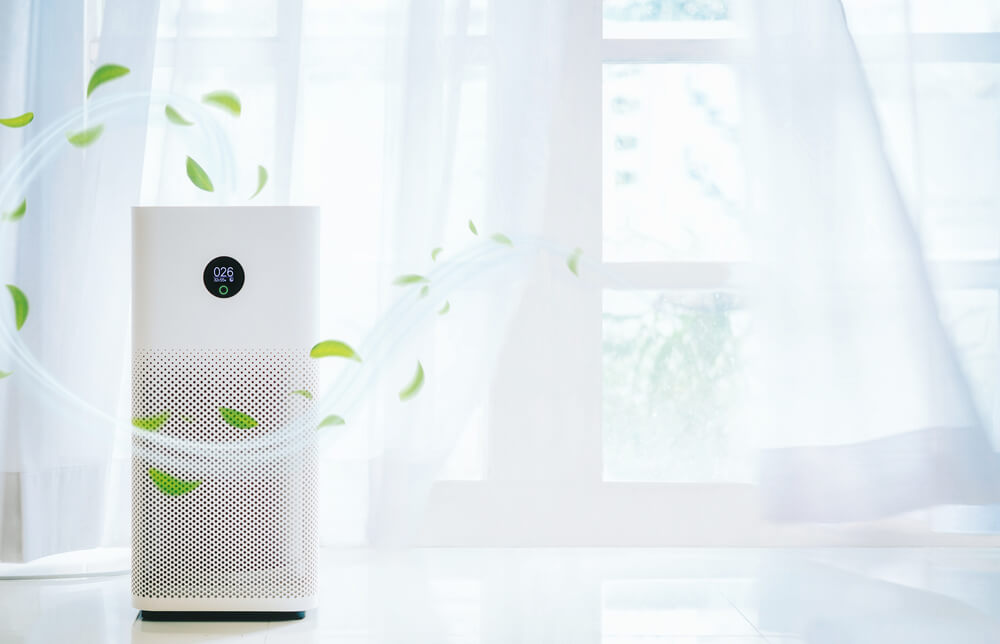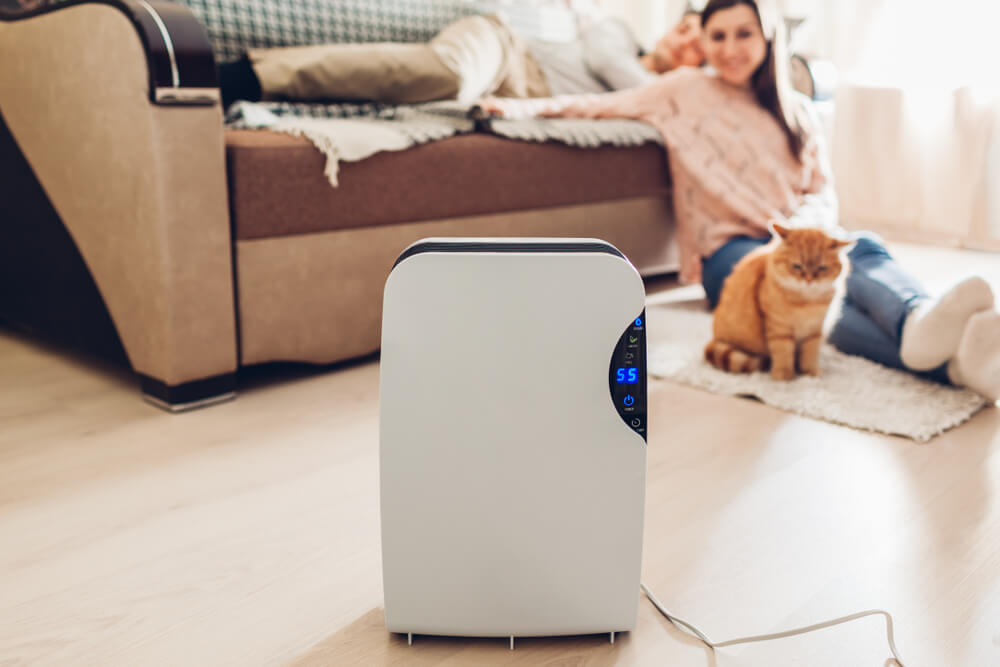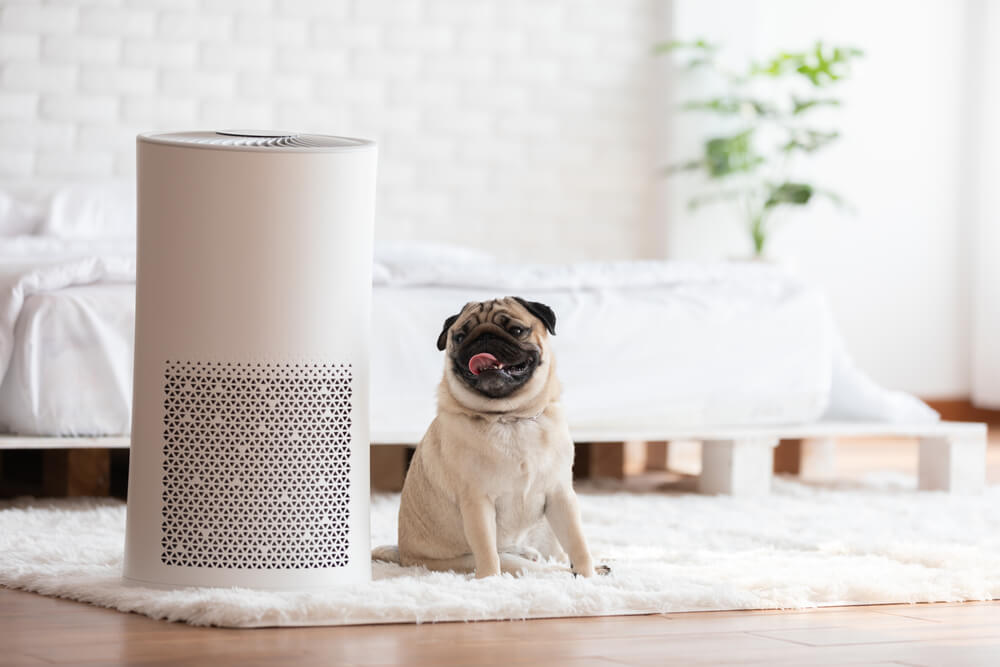Air purifiers frequently claim to be reliable when it comes to improving indoor air and related health concerns. Still, are they really that good at addressing these problems?
The experts at the Allergy and Immunology Center believe that air purifiers might help with allergens in the air. Still, only to a certain degree, and it will highly depend on your expectations and what your goals are from that specific air purifier. Can they help with asthma symptoms? Below, we’ll take a closer look at the benefits of these air purifiers.
About Air Purifiers
Before we answer the question “Do I need an air purifier?” we need to state that this article concentrates on portable devices for single rooms and not whole-house systems.
That said, most of these current devices can filter gasses and particles. To do this, many of them use several filters. For the most part, air purifiers usually work with the same principle: with the help of their fans, they draw the air through the filter, trapping different contaminants and recirculating the clean air into the room. Still, these devices may be different based on the number and type of filters they use, the square footage they are able to clean, the amount of air they can draw through the filters, and more.
And when assessing the benefits of a specific air purifier, you need to consider every aspect. For example, you will need to know the exact dimensions of the room(s) you want to clean, the capacity of the purifier you are considering, and, ultimately, the type of contaminants you want to eliminate.

Know Your Air Purifier Filters
Still, when addressing all the variables, choosing the right filter type remains essential. Experts agree that the best filters would be HEPA filters, designed to collect around 99.5% of the particles from areas less than 3 microns in size (such as dust, moisture, pollen, dirt, viruses, and bacteria).
The efficiency of a HEPA filter hinges on the density of its fibers, which is typically indicated by a rating ranging from MERV 12 to MERV 17. It’s advisable to select a filter with a minimum rating of MERV 13.
On that note, you will also want to address another variable that experts refer to as CADR or clean air delivery rate. As the name implies, this is the amount of clean air the machine will be capable of recirculating. Typically, the rate of the cleaner should be the same or at least two-thirds of the room’s dimensions.
There are cleaners that have specific CADRs based on the pollutant types they are capable of targeting, like pollen, tobacco, smoke, dust, or small- medium, and ultimately, large-sized particles.
Air Purifier Types
The following three types are the most common air purification devices:
- Electrostatic purifiers trap particles in filters by creating charged particles.
- Filtered purifiers which capture airborne pollutants in filters.
- UV light purifiers
There is a prevailing concern among research experts regarding electronic air cleaners, including UV and electrostatic purifiers, potentially emitting ozone gas and other pollutants that could pose health risks. Consequently, filtered air purifiers are generally regarded as the safest option for residential use.
It’s noteworthy that neither the Food and Drug Administration (FDA) nor the Environmental Protection Agency (EPA) provides certification for air-cleaning devices. Furthermore, the EPA does not endorse specific air-cleaning devices or manufacturers. Therefore, consumers are encouraged to exercise caution and conduct thorough research when selecting air purification systems for their homes.
Air Purifier Benefits: Are They Effective?
As mentioned above, to an extent, they are. Still, the full answer will depend on several other factors:
- The type of contaminants that you want to eliminate.
- The state of the ventilation in your home.
- The room’s size.
- The number of filters in the purifier.
- The device’s CADR rate.
- How much control you have over the contamination sources.
- The consistency at which you use the purifier.
The complexity of the matter is further compounded by the fact that particles, aside from being airborne, can also become lodged in furniture, bedding, and carpeting while also accumulating on solid surfaces such as walls and ceilings. As a result, the efficacy of your air purifier can be influenced by your household cleaning practices.
Air Purifiers vs. Allergens
As you may know, allergens are specific substances that can trigger allergy symptoms in people with respiratory conditions, asthma, and more.
Some of the most widespread allergens prevalent in indoor spaces are the following:
- Pet dander
- Pollen
- Animal dander
- Dust mites
- Cockroaches.
According to expert research, HEPA air purifiers can be beneficial for people with allergies, as they are capable of reducing the concentration of allergens in closed places like dog dander, dust mites, pollen, and more.
Still, different reviews show different results, especially in the cases of animal dander and dust mites. More specifically, research concluded that dust mite allergens may not be eliminated effectively since these allergens usually ride on larger particles that are found on surfaces that air purifiers may miss. The same research also indicated that purifiers may also fail to remove airborne pollen or animal allergens.
Assessing the Benefits of Air Purifiers
While the scientific evidence can be contradicting, some experts believe that, when used effectively, purifiers may have the following benefits:
- They may be able to reduce allergic symptoms.
- They may be helpful with lessening asthma triggers in patients and attacks that result from contaminants such as pollen, dust, and smoke.
- They may help with eliminating dust particles from your rooms.
- They may help you reduce the amount of animal dander in your spaces.
- They may help eliminate PMs or particulate matter.
- They may reduce the number of viruses in the rooms where you’re using the purifier.

Do Your Research
To get the most out of your air purifiers, you should consider using them together with your home ventilation. Regular housecleaning, controlling the source of contaminants, and optimizing humidity in your rooms may also help maximize their potential.
Start your hunt for an air purifier by first defining its specific purpose within your home. Familiarize yourself with the dimensions of the space you intend to purify and identify the particular contaminants you wish to address. Subsequently, align your expectations with the specifications of an air purifier that suits your needs. This meticulous approach ensures that the air purifier you select is ideally suited to your requirements.
That said, you should always consider the following:
- The purifier is designed for the size of your room,
- Comes with a high CADR rate and a HEPA filter.
- Targets the right contaminants.
Still, if you are dealing with allergies or have issues with asthma, it’s always highly advised to talk to your healthcare provider about the ways you can improve your indoor air quality and manage all your symptoms.
On that note, you can always consider reaching out to us for advice, testing, or treatment.


